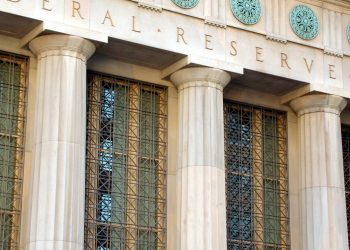RISMEDIA, August 4, 2009-(MCT)-The worst U.S. recession in 70 years should end over the next three to six months, judging by recently released data that showed that the economy’s contraction eased considerably from April through June.
The Commerce Department reported that the economy shrank at an annualized rate of 1% in the year’s second quarter, less than most analysts had expected, and far less than the dramatic 6.4% shrinkage in the first quarter, a figure revised downward from the initial estimate of 5.5%.
Independent economists think the economy now is poised to grow, albeit slowly.
“The key point is that this is the last negative (growth) report in the Great Recession, signaling the end of the downturn. The economy won’t come roaring back, but at least it’s back,” said Mark Zandi, the chief economist for Moody’s Economy.com, a forecaster in West Chester, Pa.
Recent reports on improving home and auto sales also augur well for the near future. “Leading indicators of activity are pointing up, and the housing sector appears to be stabilizing. As more stimulus dollars hit the street, we should make headway in improving the difficult employment and financial conditions in many hard-hit regions of the country,” Commerce Secretary Gary Locke said in a statement.
President Barack Obama credited the $787 billion economic stimulus plan that passed earlier this year for the emerging signs of recovery. “This and other difficult but important steps that we’ve taken over the last six months have helped us put the brakes on recession,” he said at the White House. “I am guardedly optimistic about the direction that our economy is going, but we’ve got a lot more work to do.”
One sign of stimulus spending emerged from the data: Government spending grew at an annualized rate of 5.6% in the second quarter after contracting 2.6% in the first three months of the year. Many economists think the economy will return to slow growth in the current quarter, which ends Sept. 30, and almost certainly by year’s end. They caution that it won’t be robust growth, however. “We’re shallowing out, and it is easier to see the makings of a shallow recovery,” said Vincent Reinhart, a former top economist at the Federal Reserve. “These numbers are consistent with that foundation being built.”
There’s plenty that still can go wrong, warned Reinhart, who’s now a scholar at the American Enterprise Institute, a conservative policy-research center. “I worry that we don’t have the foundations for a durable recovery, that we still have banks with large unrecognized losses,” he said. He said layoffs were expected to continue throughout the year, with the jobless rate rising above 10%. “That’ll test bank balance sheets. That’ll test business models generally. A lot of manufacturing and retail activity doesn’t look good when the unemployment rate is above 10 percent. 2010 remains a question, and nothing in these numbers tells you anything about 2010.”
Economists also worry about commercial real estate. Investment in nonresidential structures contracted by 8.9% in the second quarter, after a staggering 43.6% contraction in the first three months of this year. “The commercial real estate problems are a big worry for the financial system and thus the rest of the economy through the availability of credit. As rents and prices decline, given all the vacant space, commercial mortgage holders will default on their loans, causing big write-downs at banks and other financial institutions,” Zandi said. “This is a very significant problem for smaller banks, hundreds of whom will fail as a result. The coming downdraft in commercial real estate construction also creates more difficulties for the already reeling manufacturing base,” he said.
In another worrisome sign, real personal-consumption expenditures fell 1.2% in the second quarter, after increasing 0.6% from January through March. Consumer spending powers two-thirds of U.S. economic activity. Sales of durable goods-big-ticket items such as large appliances and wide-screen televisions-shrunk 7.1% from April to June after expanding at a 3.9% annual rate in the three previous months. Consumer spending is unlikely to return to pre-recession levels until the nation stops shedding jobs. That’s bad news for retailers and restaurants. “I think consumers are going to need a little more proof. These are certainly welcome signs, but I think it is going to take a little more time before we see consumers shift from necessity to discretionary purchases,” said Scott Krugman, a spokesman for the National Retail Federation. “I think right now retailers are still in cautious mode about the amount of inventory they are bringing to the shelves. I think back-to-school is going to be an important test of where we are.”
The National Restaurant Association was equally cautious. Its latest outlook, said that June marked the 13th consecutive month of sales declines for restaurant owners. “Restaurant operators continued to report declines in same-store sales and customer traffic in June, and their outlook for sales growth in the months ahead remains mixed,” Hudson Riehle, the group’s senior vice president of research, said in a statement.
(c) 2009, McClatchy-Tribune Information Services.
Visit the McClatchy Washington Bureau on the World Wide Web at www.mcclatchydc.com.










